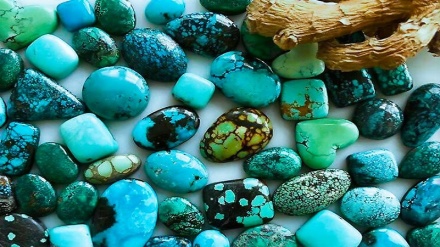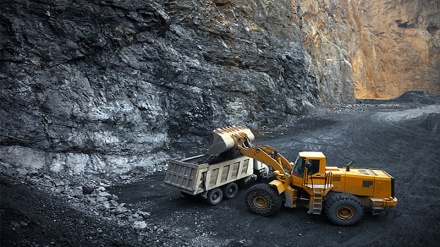Iranian Market (1)
This program takes a brief look at the most important goods produced in the precious land of Islamic Iran in the fields of agriculture, science and industry. In this episode we discuss Iranian pistachio.
The vastness of the land of Iran and its special geographical location has granted its people economic assets from the very past until now. These assets including various products in the fields of agriculture and industry have reached global status and are deeply rooted in human history. Along with appropriate geography and climate, Iran has nurtured educated and competent workforce who has been successful in establishing science- based companies and have registered their inventions and registrations.
The history of agriculture is as old as the human civilization. It is said that Iran has been one of the first territories across the globe which started farming and cultivating. Nikolai Ivanovich Vavilov, prominent Russian agronomist and botanist believes that Iran has been source and main hub of agricultural plants. Historical and archeological findings from different regions of Iran including Chogha Golan in the foothills of the Zagros Mountains, the Sialk Hills in the suburb of the city of Kashan, Shush discoveries, etc. all show that Iranians for centuries have achieved the main agricultural plants and by using different ways of irrigation including extracting Kariz or canal have founded advanced agricultural systems.
Mikhail petrashevsky, Russian orientalist in one of his compilations on Sassanid era takes a brief look at growing of various plants including fruit trees, vegetables and flowers in Iran. One of these trees is pistachio tree. Since past times human has used pistachio nut as a delicious and energetic food. This fruit is even mentioned in some ancient and religious books. Mohammad bin jarir tabari, influential Iranian scholar and historian of the third century AH has related the origin of pistachio to the establishment of Adam on earth. He wrote: “It is said the fruits that God gave Adam at the time of establishment on earth included thirty types; ten types with peels, ten types with core and another ten type without peel and core. The fruits with peel included walnut, pistachio nut, etc. …”.
Pistachio is also mentioned in Torah. In chapter 43 of Genesis it is said that Jacob told his sons to take pistachio as gift to Joseph. In this book we read: “If it must be, they do this: put some of the best products of the land in your bags and take them down to the man as a gift; a little balm, and a little honey, some spices and myrrh, some pistachio nuts and almonds.”
On the site of the genesis of pistachio there are several attitudes. This may come out of the fact that researchers have not spoken about a special type of pistachio and have taken into consideration different trees of pistachio family. This has led to different opinions ; While Britannica encyclopedia mentions Iran as the source of pistachio, Americana encyclopedia writes that pistachio originally comes from west Asia. Mohammad Hassan Abrishami, author of the book “Iranian pistachio” about the origin of pistachio writes: “The land which was later called Part and then Khorasan is the main and primary site for the growth of pistachio trees.”
Berthold laufer, American anthropologist and Iranologist in his researches which was published in 1926 said that pistachio nut has been an important fruit in the life of Iranians since very old times. He believes that the name pistachio in different languages including Latin, Greek, Turkish, Russian, Japanese and Arabic has been derived from the Persian word pesteh. This tree in old Farsi language was called Pistaca and in middle Farsi was called Pistac.
Islamic Republic of Iran owns ninety types of pistachio including Ohadi or Fandoghi with the trade name of Round, Akbari with the trade name of Super long, Kalle gouchi which is the largest type with the trade name of Jumbo, Ahmad aghaie with the trade name of long, etc.
Pistachio trees are mostly grown in the Iranian provinces of Kerman, Yazd, Khorasan, Fars, Semnan, Sistan and Balouchestan, Esfahan, and Tehran.
Iran is one of the main exporters of pistachio nut because Iranian pistachio has a very high quality and a very good taste.
Iranian pistachio is exported to tens of countries across the world including Germany, Spain, Italy, Sweden, Switzerland, Japan, Russia, UAE, Turkey, Kazakhstan, Canada, Chile, Brazil, and Tunisia.
AE/ME


